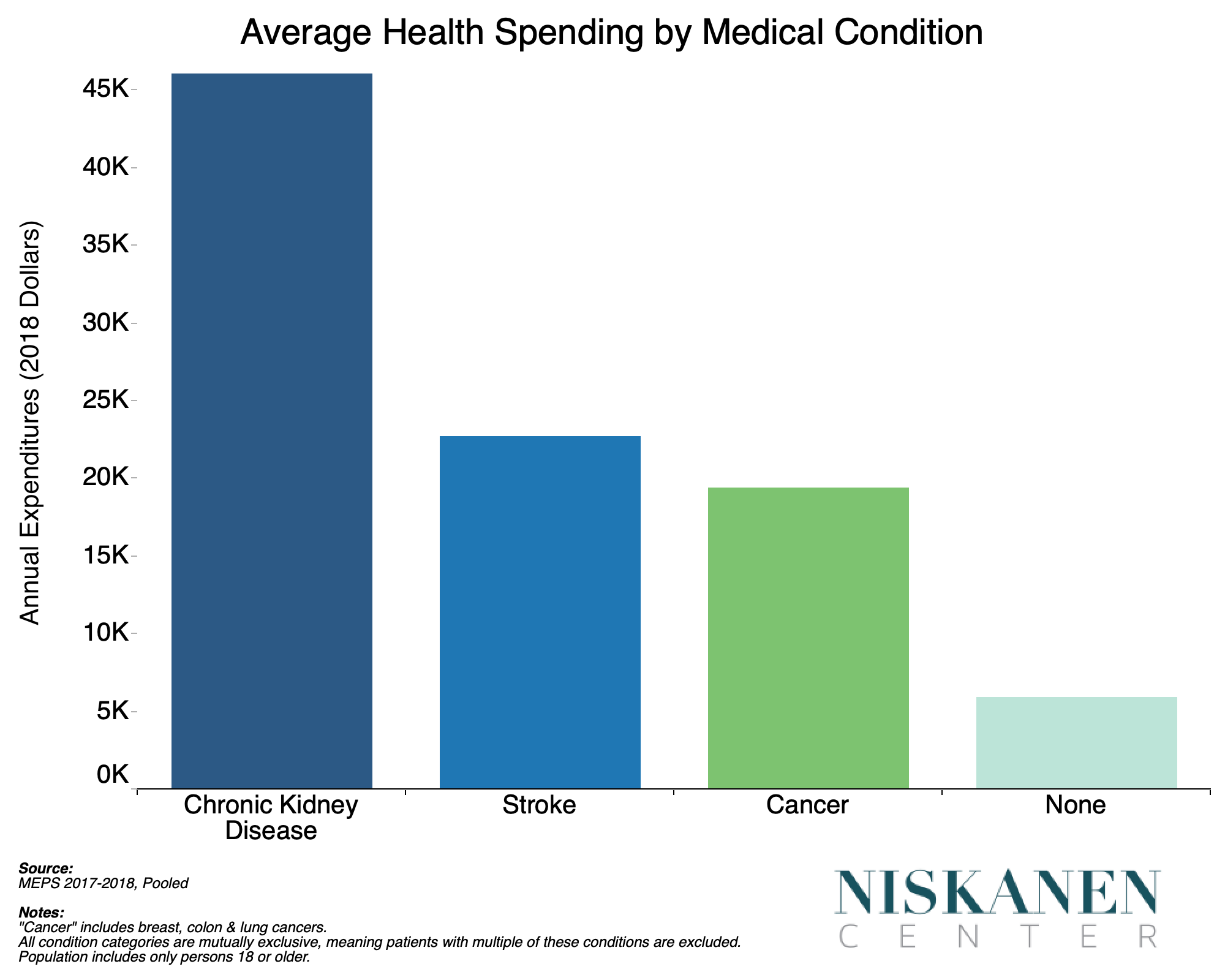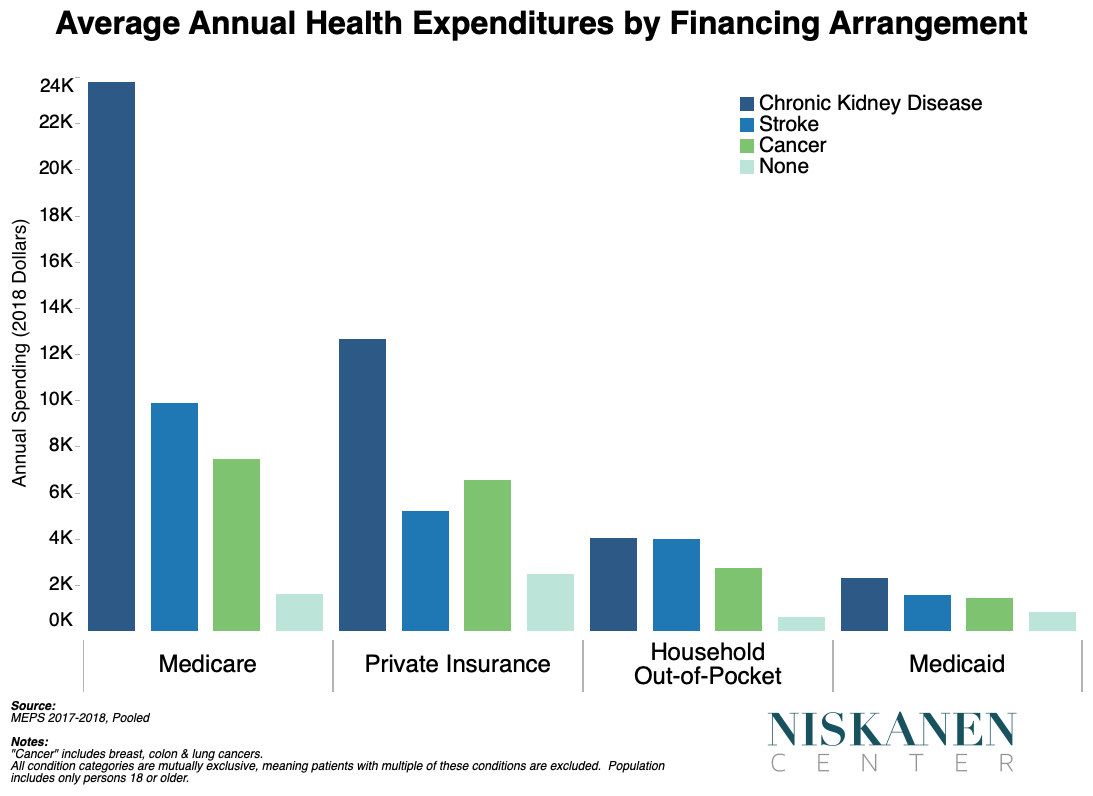Kidney failure is among the most costly medical conditions to treat and manage in the United States. The new Congress and Biden administration can put a dent in these costs while also improving patient well-being by encouraging home-based dialysis and ensuring the persons who donate kidneys are made whole.
The vast majority of kidney failures result from gradual degradation of kidney function, or chronic kidney disease (CKD). As CKD progresses, patients’ kidneys lose the ability to filter wastes from the blood, at which point dialysis or a kidney transplant is necessary to survive.
Relative to other chronic diseases identified by the CDC, such as stroke and cancer, kidney failure’s costs are more highly concentrated. The Medical Expenditure Panel Survey helps to illustrate this. Annual health spending per patient with CDK is more than double that of patients with cancer and stroke being higher. This is in spite of the fact that total spending on cancer and stroke patients is higher.

While the CDC estimates that up to 37 million adults have CKD, the vast majority of these cases go undetected, particularly during the disease’s early stages. As a result, the MEPS does not capture undiagnosed conditions, conditions not bothersome during the survey collection period, or do not otherwise result in a medical event.

Chronic kidney disease disproportionately impacts the elderly. Consequently, the lion’s share of CKD spending comes out of Medicare. Indeed, while persons with kidney failure only make up 1 percent of Medicare’s population, this population accounts for 7 percent of Medicare charges, or roughly $28 billion. Also notable is that persons in this population face higher out-of-pocket payments.
Fortunately, some policy tweaks would vastly improve the treatment of kidney failure, both in terms of costs and patient well-being. In particular, moving towards home-based delivery of dialysis and providing compensation to kidney donors.
Home-Based Dialysis
Home-based dialysis treatment is cheaper in the long run and far more convenient for patients than center-based dialysis. While less than 10 percent of U.S. dialysis is currently performed in homes, the practice is far more common in other countries such as Canada, New Zealand, Hong Kong, and the Nordic nations. Trials in the U.S. have already demonstrated the promise of this approach. The Trump administration’s ‘Advancing American Kidney Health’ Initiative was a helpful first-step here, but more encouragement is likely needed. As Vox’s Dylan Matthews notes, “the dialysis industry is heavily consolidated, with two providers (DaVita and Fresenius) accounting for 83 percent of the market.” Worse still, DaVita and Fresenius are paid per treatment — a reimbursement structure that “deters them from preparing patients for transplant and (to some extent) from offering home-based dialysis.”
Donor Compensation
Increasing the supply of kidneys available for transplant delivers gains in terms of costs and patient well-being, removing the need for periodic dialysis altogether. As the current need for kidneys vastly outpaces availability, patients are currently placed on a waitlist–and they have no guarantee that they will ever make it to the front of the list. A bipartisan bill introduced by Rep. Matt Cartwright (D-PA) in the last Congress, the Organ Donation Clarification Act of 2020, aimed to clarify the National Organ Transplant Act’s (NOTA) definition of “valuable consideration,” making it clear that donors can be compensated for medical expenses and lost wages. Due to dialysis’s extraordinary costs, just about any policy that increases kidney donations effectively pays for itself.
These policies would simultaneously improve patient well-being and while lowering long-run costs. Win-win policy tweaks of this sort are relatively few and far between, particularly when it comes to health care. There is substantial room for the new Congress and Biden administration to continue making progress here.
This piece is part of our Captured Economy of Cost Disease series exploring the role of regressive regulation in driving-up the costs of core goods like health care, education, and housing. It is made possible thanks to the generous support of the Peter G. Peterson Foundation.